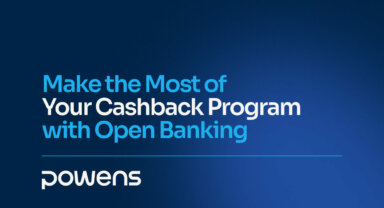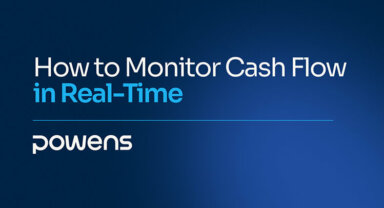The financial services industry faced significant challenges over the past year, and 2025 is set to bring substantial changes. We’ve identified four major fintech trends that will influence critical industry shifts in 2025. For Fintech, financial management software providers, banks, credit institutions, and tech executives –– as well as non-finance companies looking to embed financial services –– these trends can be your key to successful product development and compliance planning over the next 12 months.
1. The rise of Virtual IBANs
Virtual IBANs are transforming the way businesses handle payment routing and reconciliation. Designed exclusively for collecting payments, these proxy accounts link seamlessly to a master IBAN, enabling effortless automation.
By simplifying payment identification and reconciliation, Virtual IBANs offer a smarter, more adaptable approach to managing financial operations, perfectly aligned with the evolving needs of modern businesses.
By assigning a unique Virtual IBAN to each payee, businesses can streamline invoice payments through credit transfers. This innovation minimizes manual effort, reduces errors, and ensures precise payment tracking, making it an indispensable tool for companies looking to enhance operational efficiency.
Some of the top use cases for Virtual IBANs include:
- Streamlined rent collection and reconciliation for property management
- Collection of property fees (i.e. grounds maintenance)
- Utility payments (i.e. phone service, electricity, etc.)
- Automated invoice collection and reconciliation for CRMs
2. Continued integration of fraud detection and risk management solutions
Due to advancements in AI and other emerging technologies, cyber threats have become more sophisticated, and bad actors have an increasing pool of potential victims from whom to choose. While EU regulators are taking steps to address new cyber risks, businesses need to actively consider the potential impact with or without regulatory obligations.
Open Banking has grown in popularity and scope, allowing customer data to flow across different platforms seamlessly. Advanced fraud detection mechanisms, such as real-time risk assessments and proactive alerts, will play a key role in addressing modern cyber risks associated with Open Banking.
3. Growth of BNPL (Buy Now, Pay Later) and Digital-lending
As fast-growing fintech trends, Buy Now, Pay Later (BNPL) solutions and digital lending are reshaping the credit industry. These innovations are driving new opportunities for businesses to meet the evolving expectations of consumers and adapt to stricter creditworthiness assessment requirements.
For credit providers, complying with these regulations demands a significant effort. Open Finance technologies are crucial for automating and enhancing creditworthiness evaluations, ensuring they are performed quickly, accurately, and affordably. This is essential to maintain a seamless user experience while meeting legislative demands for precise assessments based on income, spending, and other financial criteria.
With digital lending, businesses can improve operational efficiency while delivering greater flexibility to customers. By offering solutions like BNPL, companies can enhance the customer journey, meet rising demand for alternative payment options, and ultimately drive more sales.
4. Upcoming European regulations reshaping the EU financial sector
It’s not a true new year without a heap of new regulatory considerations, so this often rather unpopular fintech trend continues.
Across the EU financial sector, we will see substantial technological and operational change beginning in 2025. Some regulations are coming into effect, while others have 2026 and 2027 implementation timelines looming. Key regulations to pay attention to in the upcoming year include:
-
DORA:
The Digital Operational Resilience Act (DORA) is hot on the heels of the European financial sector. The regulation went into force in January 2023 and will officially apply on 17 January 2025. DORA’s main objective is to strengthen IT security at financial entities, including banks, insurance companies, and investment firms.
-
E-invoicing:
E-invoicing is a European mandate that defines the rules for receiving and issuing e-invoices in the EU. Different countries have different implementation deadlines falling between 2025 and 2027. For example, the French B2B e-invoicing mandate requires all companies to receive e-invoices by September 2026. Large to medium companies must issue e-invoices in the same timeline, while SMEs and micro enterprises have until September 2027.
-
eIDAS and EUDI:
The Electronic Identification and Trust Services Regulation (eIDAS) was published in 2014 to establish a framework for digital identity and authentication across Europe. To address shortcomings and discrepancies across Member States, the European Commission adopted the European Digital Identity Framework (EUDI) in May 2024. Within 24 months, EU countries will have to provide EU Digital Identity Wallets to their population.
-
PSD3 and PSR:
The third iteration of the Payment Services Directive (PSD3) and the Payment Services Regulation are currently in development and are expected to have a significant impact on Europe’s standardized payment rules. A final decision on both PSD3 and PSR is expected sometime in 2025, with the rules likely going into enforcement in 2026.
-
Credit Consumer Directive:
The revised Consumer Credit Directive (CCD2) aims to simplify existing credit legislation and increase consumer protections. CCD2 widens the regulatory scope in lending to include microlenders and digital lending products, like BNPLs. It also increases fee transparency and imposes stricter marketing standards for lending and credit products.
Take charge of the trends with Powens
Powens’ Open Finance platform gives you the digital environment needed to automate and improve your most crucial processes, ensuring you stay ahead of the curve when it comes to fintech trends. Our platform serves many different clients across the financial services sector, offering solutions like:
- Bank aggregation plus automated payment and reconciliation processes
- Improved risk management, fraud detection, and customer onboarding
- Enriched customer insights and experiences
Contact Powens today to prepare your business ahead of these fintech trends.

 Dec 12, 2024
Dec 12, 2024 














